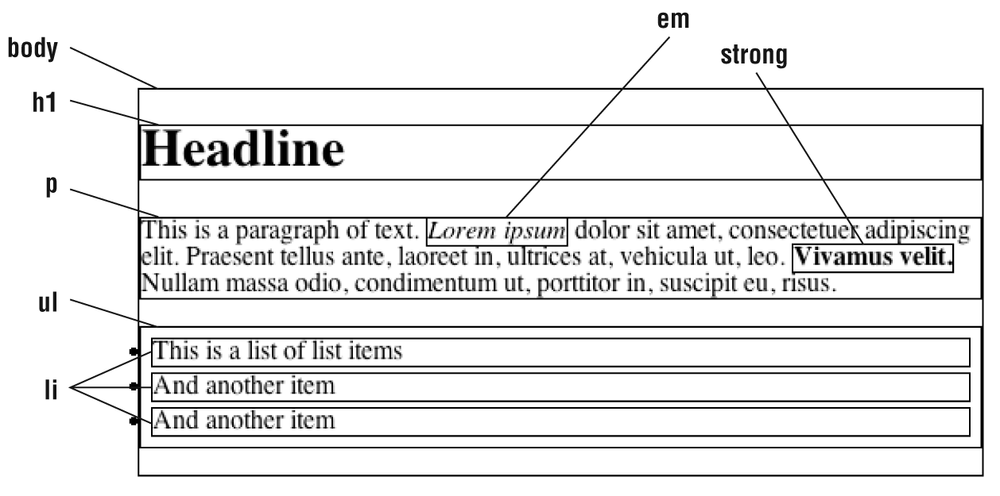Introduction to the Box Model
The box model forms the cornerstone of the CSS visual formatting system. It is a critical concept for understanding how style sheets work. This section provides only a basic introduction to the box model. The specifics of applying styles and laying out pages using the box model are provided in Chapters 19 and 21.
According to the box model, every element, whether block or inline, generates a rectangular box around itself called an element box (although block and inline boxes are handled somewhat differently). Properties such as borders, margins, and backgrounds (among others) can be applied to an element’s box. Boxes can also be used to position elements and lay out the page. Figure 16-3 shows the resulting boxes for this small sample of markup.
<body> <h1>Headline</h1> <p>This is a paragraph of text.<em>Lorem ipsum</em>dolor sit amet, consecteteur adipiscing elit. Praesent tellus ante, laoreet in, ultrices at, vehicula ut, leo.<strong>Vivamus velit.</strong>Nullam massa odio, condimentum ut, porttitor in, suscipit eu, risus.</p> <ul> <li>This is a list of list items</li> <li>And another item</li> <li>And another item</li> </ul> </body>

Figure 16-3. XHTML elements and their resulting boxes
Element boxes are made up of four main components. At the core of the box is the element’s content. The content is surrounded by some amount of padding, then the ...
Get Web Design in a Nutshell, 3rd Edition now with the O’Reilly learning platform.
O’Reilly members experience books, live events, courses curated by job role, and more from O’Reilly and nearly 200 top publishers.

